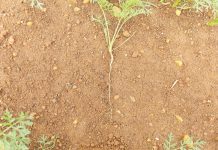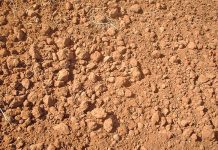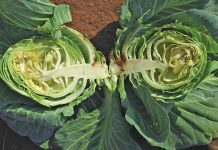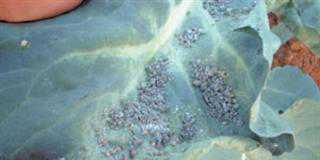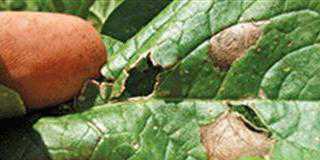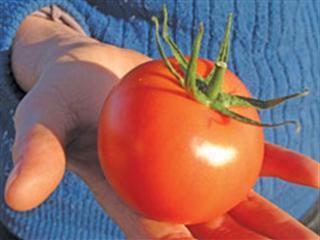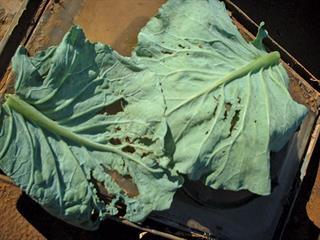
My first encounter with a trace mineral deficiency was when the leaves of young transplants started cupping and a yellowish mottled chlorosis appeared on them. (Chlorosis is a condition where leaves cannot produce enough chlorophyll.) Not one of the experts I called in could identify the problem. In desperation, I mixed small quantities of each trace element and sprayed these separately on a bad patch – one trace element per bed. Just over a week later, the bed sprayed with molybdenum started to green up, giving me the answer I was looking for.
Molybdenum
A molybdenum deficiency occurs in patches – I have never encountered an entire land uniformly affected. In the example above, a soil analysis revealed that the pH of the land had dropped, making molybdenum less available to the plants.
All it takes is 50g/ha to 100g/ha of sodium molybdate to rectify the deficiency. If the soil pH is on the low side, it’s worth applying sodium molybdate anyway to avoid a problem.
I have never seen this deficiency with a neutral pH or higher.
Boron
This is an unstable element that readily leaches from the soil. The organic status of the soil and other variables can cause a deficiency which may disappear later without any treatment. A boron deficiency manifests as jagged tears in the leaves. Diamondback moth larvae create a similar effect when they nibble on the very young leaves and the damaged areas increase in size as the leaf grows.
This can confuse the untrained eye. The difference is that the diamondback moth’s holes are more rounded and are seldom found on every plant. A boron deficiency affects all the adjoining plants in the area. Boron is easy to apply, so it’s worthwhile dosing once or preferably twice as a foliar feed with every brassica crop. I use 1kg/ha of Solubor or a similar product in the boom sprayer. If there is no deficiency this treatment will not harm the crop.
I have also used Borax at a rate of 15kg/ha with good results. But it’s difficult to apply this small quantity uniformly over the entire area, and it’s not worth the effort given the convenience of a foliar application.
Magnesium and manganese
A deficiency of either of these elements causes a mottled chlorosis that is more concentrated towards the leaf edges. There may be some cupping as well. A magnesium deficiency is always seen on older leaves first, while a lack of manganese is seen on younger leaves. This difference will help you determine which element to supplement. Knowing the soil pH also helps: magnesium becomes less available at a lower pH and manganese is less available at the higher levels.
Phosphorous
A lack of this macro element causes a purpling of the leaves, usually in winter when the element is less available. It should not be confused with the pink colouring that occurs on light-coloured leaves when nitrogen is lacking, especially when the phosphorous level is adequate to fairly low. Instead, look for purpling on dark green leaves – this is a sure sign of a phosphorous deficiency. The availability of this element starts to decline below a soil pH of 6,5.
Potassium
A deficiency of this element causes marginal scorching and the leaves curl inwards.
A word of caution
Avoid spraying a foliar feed containing several nutrients on cabbages. I have carried out substantial trials on many such ‘all-in-one’ commercial products and found no benefit. Rather determine what individual products are required and apply these
at the correct rates. A mixture of boron and molybdenum is effective, however.



